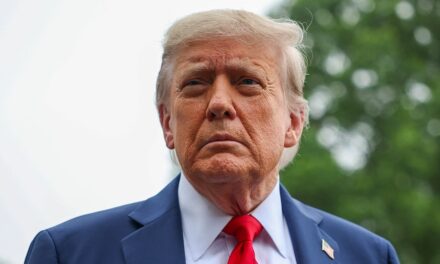In recent discussions about military recruitment, Defense Secretary Pete Hegseth shed light on the unexpected surge of enlistments that occurred during the Trump administration. The increase in military personnel is a significant trend that merits examination, especially given the ongoing challenges facing the recruitment efforts of armed services across the United States.
The backdrop of this surge is multifaceted, encompassing various elements ranging from changing political climates to evolving societal perspectives on military service. Secretary Hegseth addressed these topics in detail, providing insights into the factors that influenced the remarkable increase in enlistments during Trump’s presidency.
One of the primary reasons identified by Secretary Hegseth is the strengthened sense of patriotism and national identity that resonated with American citizens during Trump’s tenure. This period saw a notable shift in public perception of the military as an institution, which likely inspired younger generations to consider enlisting. The discourse around patriotism was emphasized in many of Trump’s speeches, igniting a sense of duty among potential recruits.
Moreover, the Trump administration actively promoted the idea of a strong military as synonymous with a strong America. This rhetoric was reinforced through various communication channels, including social media, rallies, and defense policy announcements. Such messaging likely contributed to a more favorable view of military service and made it an appealing option for those contemplating their futures.
The recruitment campaigns initiated during this time were also tailored to a more diverse audience compared to previous eras. Hegseth pointed out that there was a concerted effort to reach out to communities that had previously been underrepresented in military service. These initiatives included promoting opportunities for advancement, education benefits, and the various career paths available within the military. By broadening recruitment efforts in this manner, the military was able to attract individuals from different backgrounds, subsequently enriching the overall composition of the armed forces.
In addition, the economic climate during much of Trump’s presidency played a role in recruitment trends. With shifts in the job market and the availability of lucrative employment opportunities, some young Americans turned to military service as a means to gain skills, training, and financial stability. Secretary Hegseth noted that the military’s promise of educational benefits and job training was particularly appealing during uncertain economic times, leading prospective recruits to view service as a viable career option.
The veteran community also played a significant role in influencing recruitment successes. Many veterans shared their positive experiences with the military through various platforms, creating an image of service that resonated well with potential recruits. This peer-to-peer connection showcased the benefits of military life and fostered an environment where military service was celebrated and encouraged.
Another factor mentioned by Hegseth is the cultural and entertainment landscape during the Trump administration. Military-themed movies, television shows, and other forms of media contributed to the glamorization of military service. High-profile films that highlighted the heroics of service members helped solidify the image of the military as not only honorable but also exciting and dynamic. As these narratives permeated popular culture, they likely encouraged more young people to consider enlisting.
Nevertheless, the recruitment surge is not without its challenges. Despite the rise in numbers during Trump’s administration, the military continues to face obstacles in maintaining those figures in subsequent years. The changing demographics of the United States youth population, as well as differences in values, lifestyles, and aspirations, mean that a one-size-fits-all approach to recruitment may not be effective moving forward.
Secretary Hegseth emphasized the importance of building upon the successes seen in recent years while also evolving recruitment strategies to align with the concerns and interests of a new generation. As the military adapts to a rapidly changing society, it is essential to develop initiatives that resonate with young Americans, such as continued outreach efforts and personalized recruitment tactics.
Furthermore, today’s potential recruits have different expectations regarding work-life balance, mental health support, and career development opportunities, making it vital for military recruitment strategies to reflect these values. The armed forces must foster environments that prioritize these aspects to ensure that they remain attractive to young recruits who may be hesitant about committing to service.
In conclusion, Secretary Hegseth’s insights into military recruitment during the Trump administration reveal a complex interplay of factors that led to the increase in enlistments. From a renewed sense of patriotism to the impact of economic conditions and cultural influences, the surge is indicative of a broader societal shift in how military service is perceived. Though the recruitment landscape remains challenging, understanding these trends is crucial for the future of the Armed Forces as they work to sustain and enhance their recruitment initiatives in an evolving America.
































